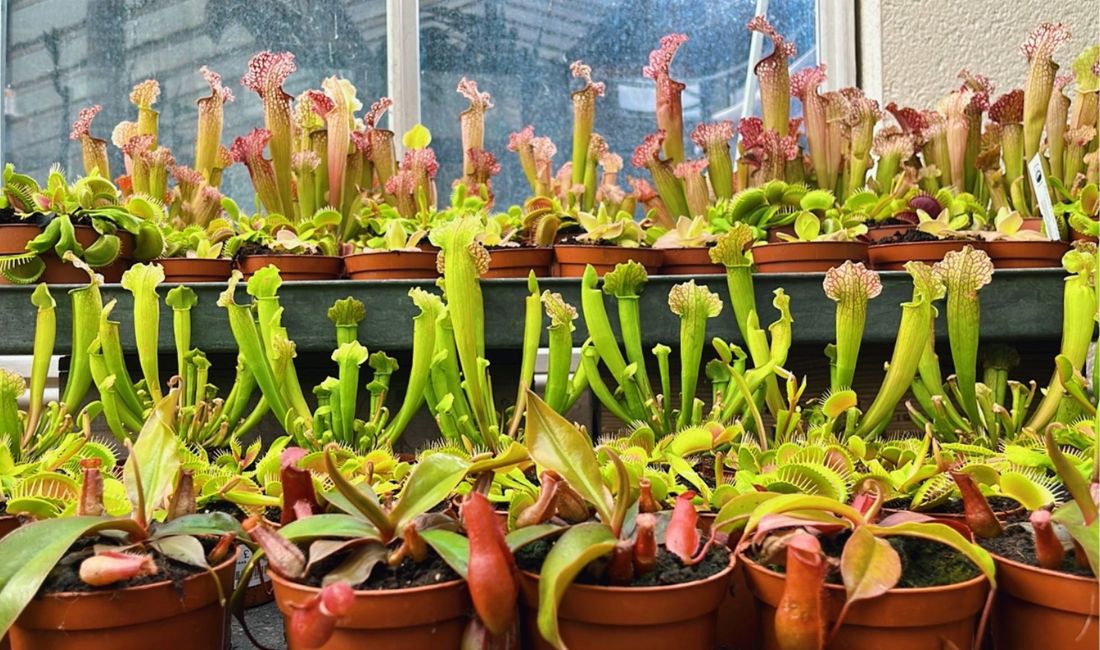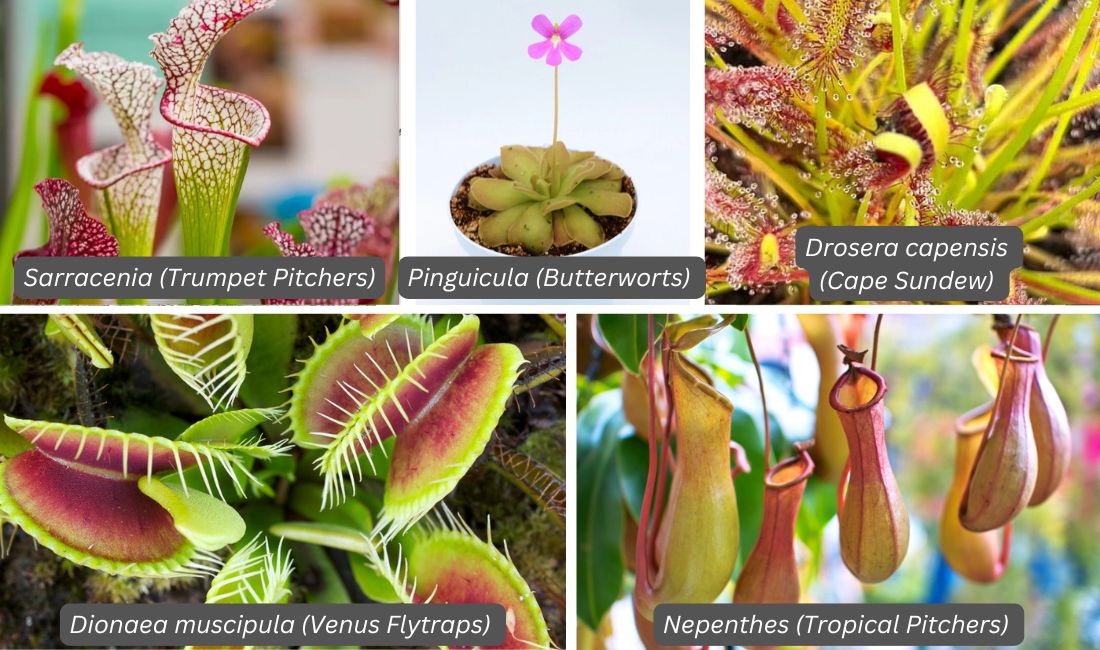
If you’re looking for something a bit different, carnivorous plants may be just the thing. These fascinating plants are weird, wonderful, and beautiful, and deserve a place in any home - not just for their unique and unusual behaviour of eating insects, but also for their striking architectural looks. They’re fun for children and addictive for adults!
Carnivorous plants use specialised traps to lure and capture insects. Once captured they release digestive enzymes to break down the insects into a form which the plant can absorb.
Caring for Carnivorous Houseplants
Carnivorous plants can live for years with the right care and attention, and although easy to care for, they do require specialist treatment.
In nature, carnivorous plants grow in poor soil so catching and digesting insects is their way of getting nutrients. If you're concerned that there aren't many insects in your house, just open the window for a while and nature usually obliges! Never feed them with dead bugs or fertilisers as they respond to movement, not taste. Generally, they need very few insects, requiring only one or two a month.
In addition to requiring insects, most carnivorous plants also need a sunny spot, especially Venus Flytraps, Sarracenia Trumpet Pitchers and Cape Sundews - while others such as Butterworts and Nepenthes Tropical Pitchers prefer half sun, half shade.
It's essential not to use tap water (or mineral water) to water carnivorous plants as this contains too many nutrients. Carnivorous houseplants should always be watered with rainwater (doesn’t matter if it’s dirty!), deionised water or distilled water. As most carnivorous plants are bog plants, keep the soil wet all the time (but not waterlogged) – we recommend sitting their pots in a tray of water so that they can draw up moisture as required.
Most carnivorous plants are dormant during winter so will stop catching insects at this time. In winter you can also reduce watering, but don’t let the soil dry out completely. Some of them, such as Venus Flytraps, may die back completely before emerging again in Spring.
Carnivorous plants benefit from repotting every few years but avoid normal potting compost as this contains too many nutrients. Always use a specialised carnivorous plant compost mix which usually contains sphagnum moss and perlite.
Although carnivorous houseplants are generally not toxic to pets, they can still cause mild digestive upset, particularly the enzymes in the traps so it’s best to stop your pets from nibbling them.
As with all houseplants, regularly check for any pests and diseases and treat accordingly – our houseplant team are happy to advise.
Our Favourites
We stock a range of these fascinating and interesting plants – with the most popular including:
Dionaea muscipula (Venus Flytraps) – the best known of all the carnivorous plants and fascinating to watch! The plant’s nectar attracts insects, and the modified leaves have a jaw-like structure that snaps shut when an insect touches sensitive trigger hairs twice within a short time. Interlocking teeth on the leaf edges then seal the fate of the insect while it is digested. Requires full sun. Frequently catches house flies and wasps but enjoys a wide range of prey including spiders and daddy long legs!
Sarracenia (Trumpet Pitchers) – probably one of the easiest carnivorous plants to grow, with tubular leaves in different colours that form a ‘pitcher’ with a hood or lid over the top and contain a nectar-like secretion for attracting insects. Once insects fall into the pitcher, they are unable to climb up the slippery interior and are digested by the plant’s enzymes. Requires full sun. Frequently catches house flies and wasps.
Nepenthes (Tropical Pitchers) – an exotic looking carnivorous plant with striking leaves and pendulous, lidded, coloured pitchers. Nepenthes lure insects with a nectar scent: once inside the cup the insect is unable to grip on the smooth edge and slides into the cup. Sturdy downward pointing hairs prevent the insect from escaping while the plant begins its digestive process. Prefers half sun, half shade. Catches small insects such as fruit flies and gnats.
Pinguicula (Butterworts) – attractive rosette of leaves and small flowers in summer on slender, upright stems. The fleshy leaves are covered in a sticky, greasy secretion that catches tiny flies. They are excellent at controlling whitefly and were used by the Victorians in their orchid houses as a biological control for this purpose. Prefers some shade so ideal for a north facing windowsill.
Drosera capensis (Cape Sundew) – evergreen with a rosette of strap-like leaves covered in sticky hairs that catch small insects. Once the insects are caught, the leaves spectacularly roll over, trapping the prey inside. Long lasting pink flowers on long green stems. Requires full sun. Catches smaller flies such as midges and mosquitoes, up to small houseflies.

Clifton Nurseries Garden Centre
London, W9 2PH
Bank Holidays open until 7pm
0207 432 1867
Monday – Saturday 9am-5:30pm, Sunday 10.30am-4.30pm
Clifton Nurseries Garden Services
London, W9 2PX
